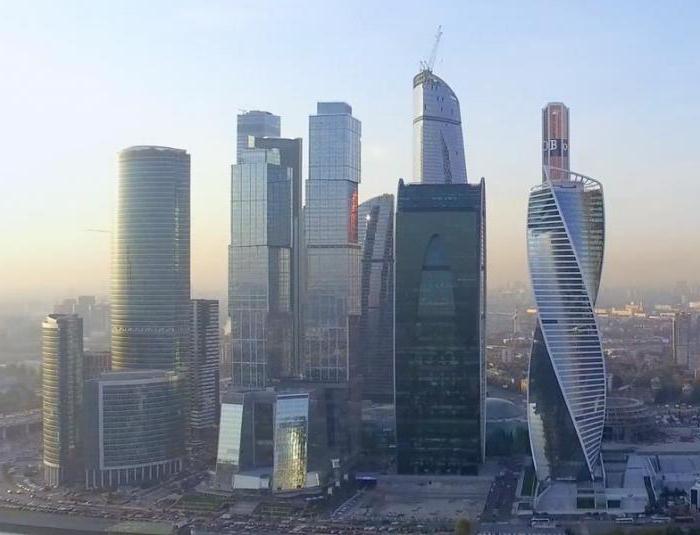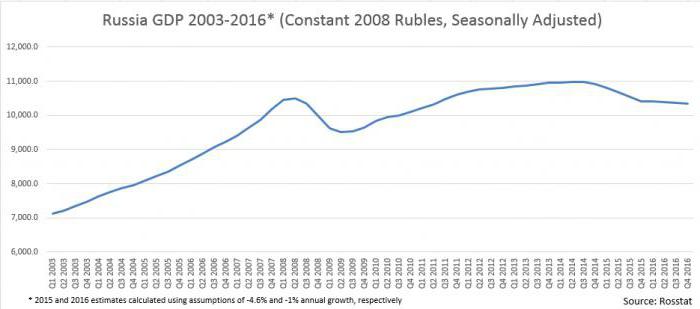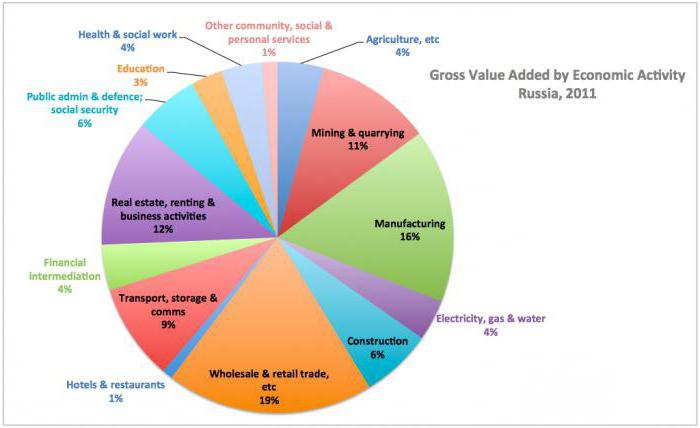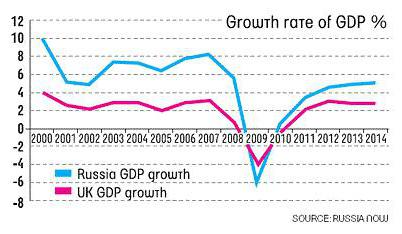Russia is a state with a mixed economy. State ownership is maintained in strategic areas of the economy. According to data for 2016, Russia's GDP is 1.178 trillion US dollars. This is the fifteenth place in the world. After the collapse of the USSR, privatization of industrial and agricultural enterprises took place in the Russian Federation. The exception is the energy sector and the military-industrial complex. It is on the functioning of these two sectors that the whole Russian economy depends significantly. In the period from 2000 to 2012, due to revenues from the energy sector, a rapid increase in living standards in the country was financed. According to the data for 2016, the gross domestic product per capita is 8058 US dollars, according to the PPP - 23875.

Features
The fact that Russia sits on the "oil needle", many researchers say. The gas industry provides 16% of GDP and 52% of federal budget revenues. Most of the exports are energy. Russia also has a developed military-industrial complex. He is able to produce the latest equipment: fifth-generation fighters, nuclear submarines, firearms, short-range and long-range ballistic missiles. A significant part of defense industry products is exported. In 2013, this volume amounted to 15.7 million US dollars. Only the United States exports more defense products. The most popular products of the Russian military-industrial sector were combat aircraft, air defense systems, ships and submarines.

Brief information
- Currency is the ruble (RUB).
- The fiscal period is a calendar year.
- Trading organizations - WTO, CIS, APEC, EVRAZES, G20.
- Russia's GDP: nominal - 1.178 trillion US dollars, PPP - 3.493.
- By sector: agriculture - 4%, industry - 36.3%, services - 59.7%.
- Inflation - 12.9%.
- The population below the poverty line is 13.4%.
- Unemployment - 5.8%.
- Export - 340.3 billion US dollars, import - 194.1.
- The main trading partners are China, Germany, the Netherlands, Italy, Ukraine.
- Exported goods - gasoline, natural gas, metals, wood, chemicals, imported - consumer products, machinery, equipment, medicines.
- Government debt - 15.6% of Russia's GDP.

Place in the world
Stimulating growth in the Russian Federation has always been highly dependent on energy prices. On the territory of the country is about 30% of the global reserve of natural resources. Their total value is estimated at 75.7 trillion US dollars. The Russian Federation is the richest natural resource country in the world. However, if you look at the nominal GDP of Russia, then it is in 15th place. If consider purchasing power parity ruble then on the 6th. Many statistical agencies predicted the onset of a recession in the Russian economy in early 2014. Among the reasons they called a drop in oil prices, military intervention in Ukraine, a significant outflow of capital. However, in 2015, GDP growth remained positive - 0.6%. Part of Russia's GDP in the global economy as a percentage is only 1.55%. A further increase in the role of the Russian Federation is largely dependent on prices and demand for energy and other natural resources.
Russia's GDP growth by years
- 1999 – 6,4 %.
- 2000 – 10 %.
- 2001 – 5,1 %.
- 2002 – 4,7 %.
- 2003 – 7,3%.
- 2004 – 7,2 %.
- 2005 – 6,4 %.
- 2006 – 8,2 %.
- 2007 – 8,5 %.
- 2008 – 5,2 %.
- 2009 – 7,8 %.
- 2010 – 4,5 %.
- 2011 – 4,3 %.
- 2012 – 3,4 %.
- 2013 – 1,3 %.
- 2014 – 0,6 %.

Protectionism
Russia is considered a state whose government is actively interfering in market conditions. And this opinion is quite reasonable. The state owns enterprises in all strategic areas of industry. In 2013, Russia applied more protectionist mechanisms than any other country. Main trading partners, Belarus and Kazakhstan, are not far behind her.The most popular mechanisms are direct subsidies to local enterprises and tariff measures.
Economic areas
Russia is the largest territory in the world by territory. It is divided into 11 economic regions. Oil and gas are produced in Western Siberia. New cities with modern infrastructure appear here. Eastern Siberia is a center of hydroelectric power, non-ferrous metallurgy and forest industry. And in the Far East, diamonds and gold are mined. The Central Black Earth and North Caucasian regions are agricultural. Food industry is developed here. Others are somewhat more diverse in the structure of their economy. Engineering, the chemical industry, and pharmaceuticals are scattered throughout their territory. Today, the government is trying to develop science and innovation. In terms of innovation in the Russian Federation, it occupies the 12th place in the world.
international trade
Part of Russia's GDP in the global economy is less than 1% of the total. However, many states depend on natural resources exported from here. Balance trade balance Russia is positive. Its average figure over the past fifteen years is 8.3 billion US dollars. The best situation was observed in December 2011. During this period, the trade balance amounted to 20 billion US dollars. All this is mainly due to natural gas prices. Its export is about 60% of the total trade.






